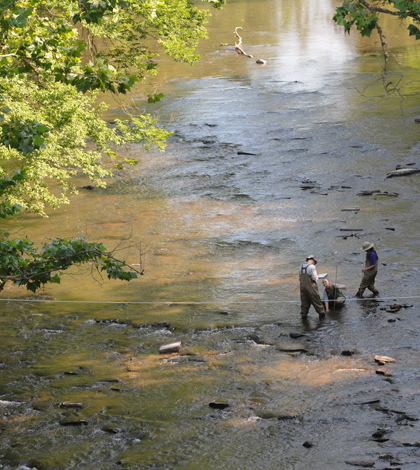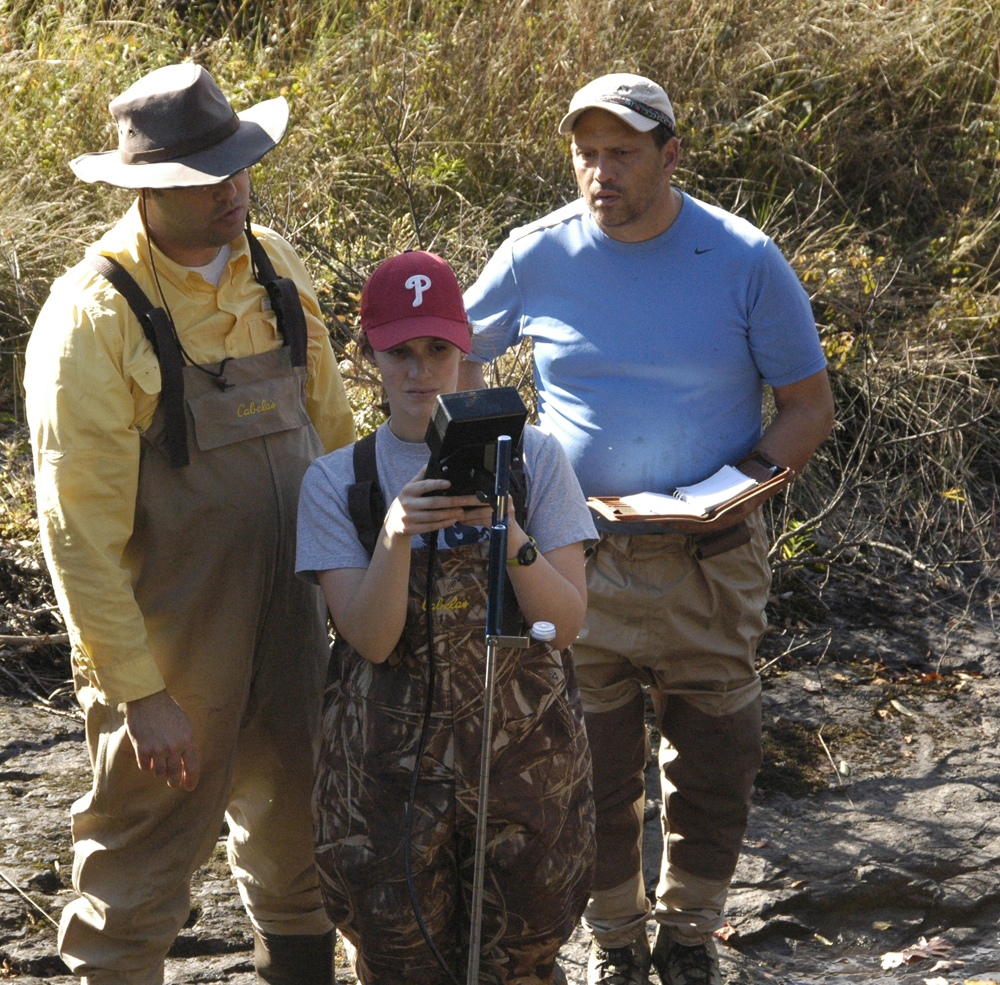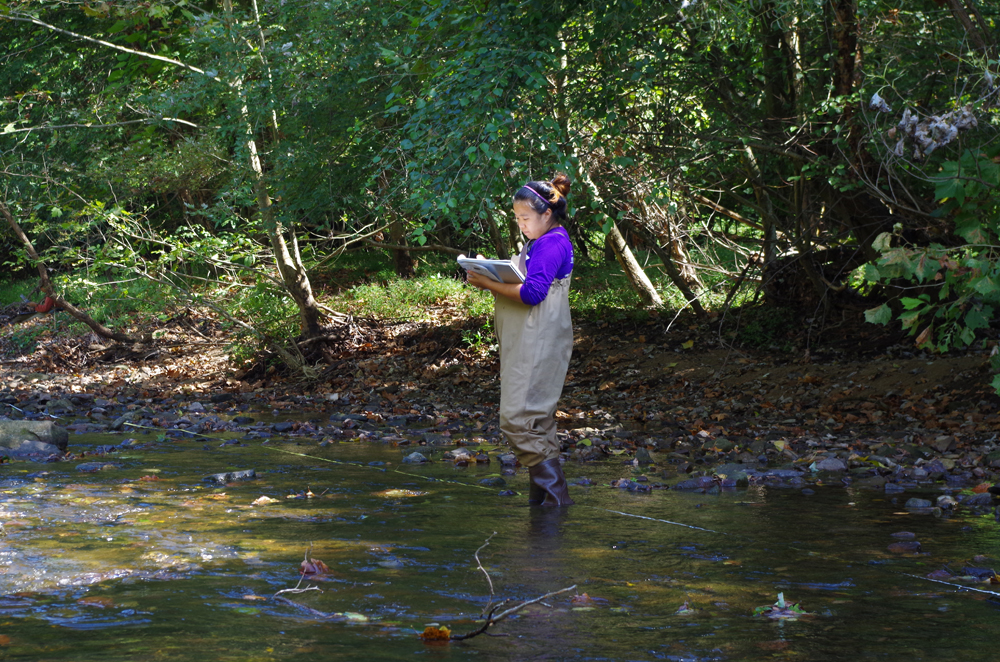Monitoring throughout Delaware River watershed keeps tabs on protection program

Workers from The Academy of Natural Sciences of Drexel University work in Manatawny Creek as part of the William Penn Foundation's Delaware Watershed Conservation Program (Credit: John Strickler/The Mercury)
The Academy of Natural Sciences in Philadelphia is the oldest natural history museum in the Western Hemisphere, best known by locals for the skeletons that populate its Dinosaur Hall, including a 40-foot Tyrannosaurus rex.
But it’s the academy’s lesser-known prowess in watershed science that earned its integral role in an effort to improve water quality in the Delaware River Basin for the 15 million people that depend on it for drinking water and other uses.
“We’ve got about 70 years under our belt of looking at watersheds and water quality and aquatic ecosystems,” said Roland Wall, the academy’s senior director for environmental initiatives.
The academy, which joined with Drexel University in 2011, hosted the career of the pioneering aquatic ecologist Ruth Patrick. Patrick was among the first to use organisms to monitor environmental health, Wall said. That set the tone for the academy’s environmental research for decades to come, focusing on areas such as human impacts on stream health, including point-source pollution from factories.
Today the academy is partnering with the William Penn Foundation, a Philadelphia-based grant-making organization that has recently made water quality in the Delaware River Basin the target of it’s refocused environmental giving. Academy scientists have helped identify areas throughout the watershed that could most benefit from environmental restoration or protection efforts funded by William Penn. They’ve also launched a water quality monitoring campaign that will establish baseline conditions throughout the watershed while tracking the effects of the funded projects.
“They have put a particular emphasis on scientific data-driven designs and monitoring and assessment of the work they’re doing,” Wall said of William Penn. “For whatever reason, there has not been often a good run of data on the before-and-after effects of projects like this.”

Academy scientist Dr. Jerry Mead (left), with Drexel University students Emily Johnson, and Jerome Czarick, record stream depth and velocity in Little Bushkill Creek, as part of the Delaware Watershed Conservation Program. (Credit: Roger L. Thomas/ANSP)
The Delaware River is the longest undammed stream east of the Mississippi and its 13,000-square-mile basin drains parts of Pennsylvania, New York, New Jersey and Delaware. The watershed contains diverse landscapes from pristine forests in the Poconos and New Jersey Highlands to agricultural land to urban development. An earlier assessment by the Academy identified groups of sub-watersheds that represented the best and the worst — areas that should either be restored or preserved.
“The kinds of work we were thinking about were dealing particularly with agricultural runoff, urban stormwater runoff and issues of groundwater depletion,” Wall said. “And then looking at areas of high value, particularly upland forested issues they thought should be protected as part of the filtration system for the upper waters.”
While the Academy was picking out areas within the watershed to focus on, the Open Space Initiative, a New York-based project partner, identified around 40 smaller groups throughout the region best suited to carry out the work of protecting and restoring aquatic ecosystems. Along with the National Fish and Wildlife Foundation, the William Penn Foundation is now in the process of awarding grants for a diverse set of projects, from securing conservation easements on pristine land to working with the community to keep grazing cows out of streams.

Academy research technician Amanda Chan documents the vegetation and physical characteristics of the stream and bank for the Delaware Watershed Conservation Program, sponsored by the William Penn Foundation. (Credit: ANSP)
In addition to the Academy’s baseline water quality monitoring already underway, they’re pulling together existing data from agencies like the Delaware River Basin Commission and integrating it into a centralized database. They’ll continue to monitor macroinvertebrates, fish communities and water chemistry near project sites for years to come. Since they can’t necessarily cover everything, they’ll also be training local groups to do their own monitoring.
“It’s a very comprehensive program,” Wall said. “It looks at integrating the work and not just having 40 groups willy nilly across the basin, but really trying to align the work that’s being done.”
Top image: Workers from The Academy of Natural Sciences of Drexel University work in Manatawny Creek as part of the William Penn Foundation’s Delaware Watershed Conservation Program (Credit: John Strickler/The Mercury)





0 comments